Is it time to buy a bike, but your budget doesn’t stretch to one fresh off the sales floor? Don’t worry, there are plenty of bargains out there on the second-hand market – you just need to know what to look for. So to make sure you’re really happy with your second-hand bike for more than just the first ride, take note of our top tips of what to check before buying.
Once you’ve settled on your budget for your second-hand steed, ask yourself how good you are with the spanners: will you be able to repair and upgrade it, or is it wiser to rely on the skills of a local bike shop? Then think about your needs: wheel size, travel, and geometry will determine your purchase. Second-hand doesn’t have to mean old school, so we’d look beyond 26ers these days, as it’s getting tougher to find spare parts. And finally, never buy a bike without giving it a proper look-over, and preferably taking it out for a test ride.
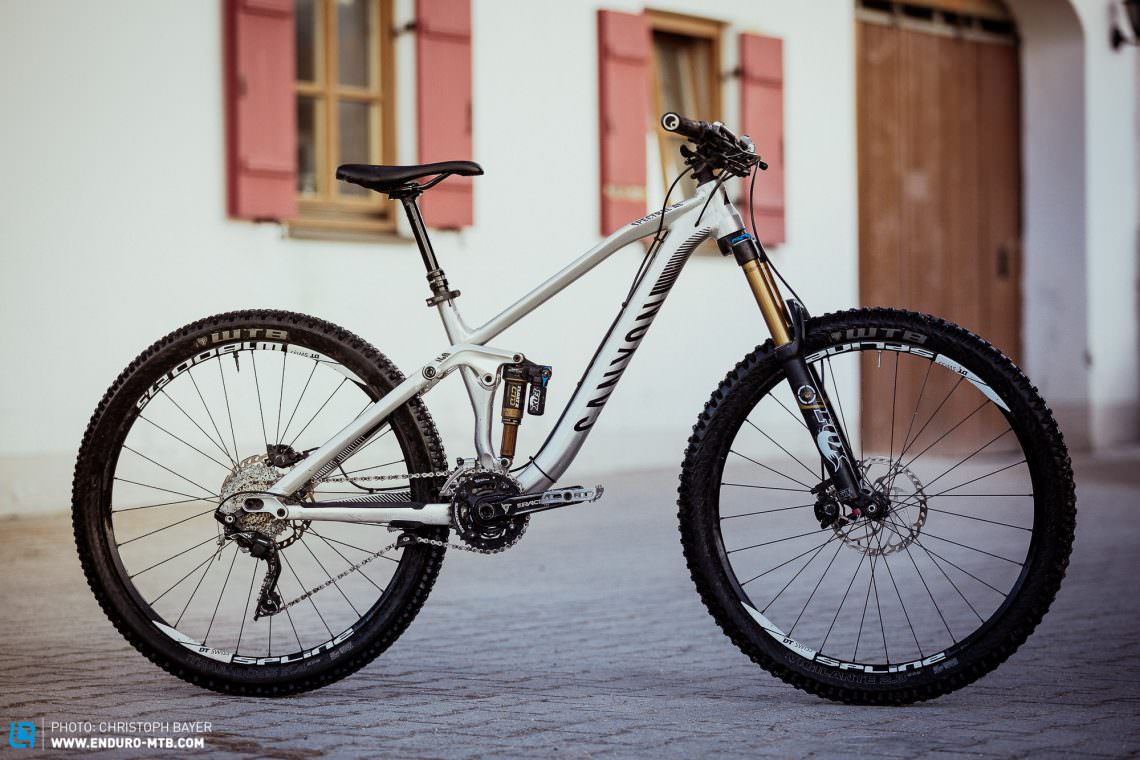
The frame
The condition of the frame is fundamental for a second-hand bike. If it’s in good nick, then it implies that it’s been looked after well, ready to offer years more trusty service. When checking the frame, look out for cracks and dents around potential problem areas like the shock mounts, bottom bracket, and chainstays. Look for thin lines in the paint and on the welds. The same applies to carbon frames: if there’s no visible damage, it should be fine. If there’s lots of rock damage and chips on the bike, it’s a safe bet to presume that it’s been pushed hard and taken some hammer. Worn-out bearings can be changed quickly, but you’ll have to budget for the extra cost.
The suspension

If the frame’s in good condition, move on to the next crucial elements: the fork and rear shock. Find out if and when they’ve been serviced – calculate an extra € 100 per piece if they need attention. Look out for warning signs like visible wear and tear to the finish of the shock and the stanchions. Are the bushings worn out? Here’s a simple trick: hold the back wheel down into the ground and pull the bike up by the frame. Listen for any movement: any clunks, creaks, or clatters should set off alarm bells. Any squeaks during compression should also be noted. Do all of the adjusters function properly? If you get as far as a test ride, pay attention to the suspension responsiveness and test the full travel a few times, front and back. Does the rebound still work, or is it like a pogo stick?
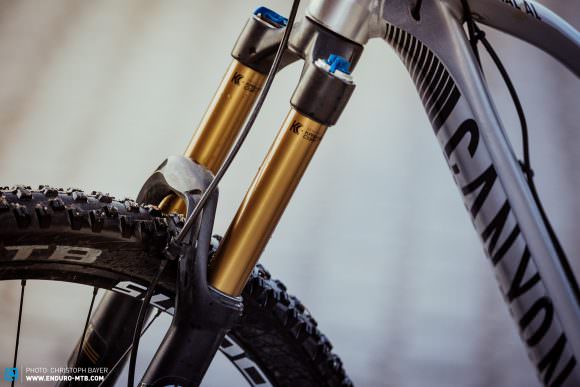
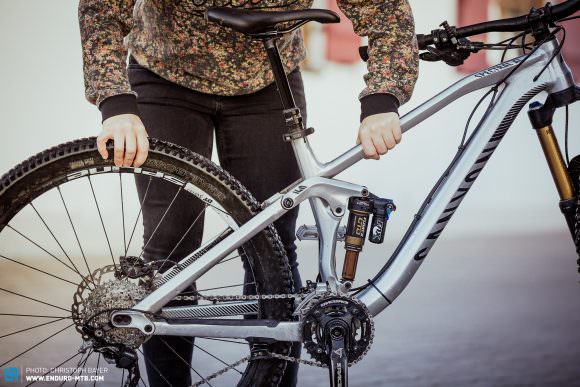
The dropper post
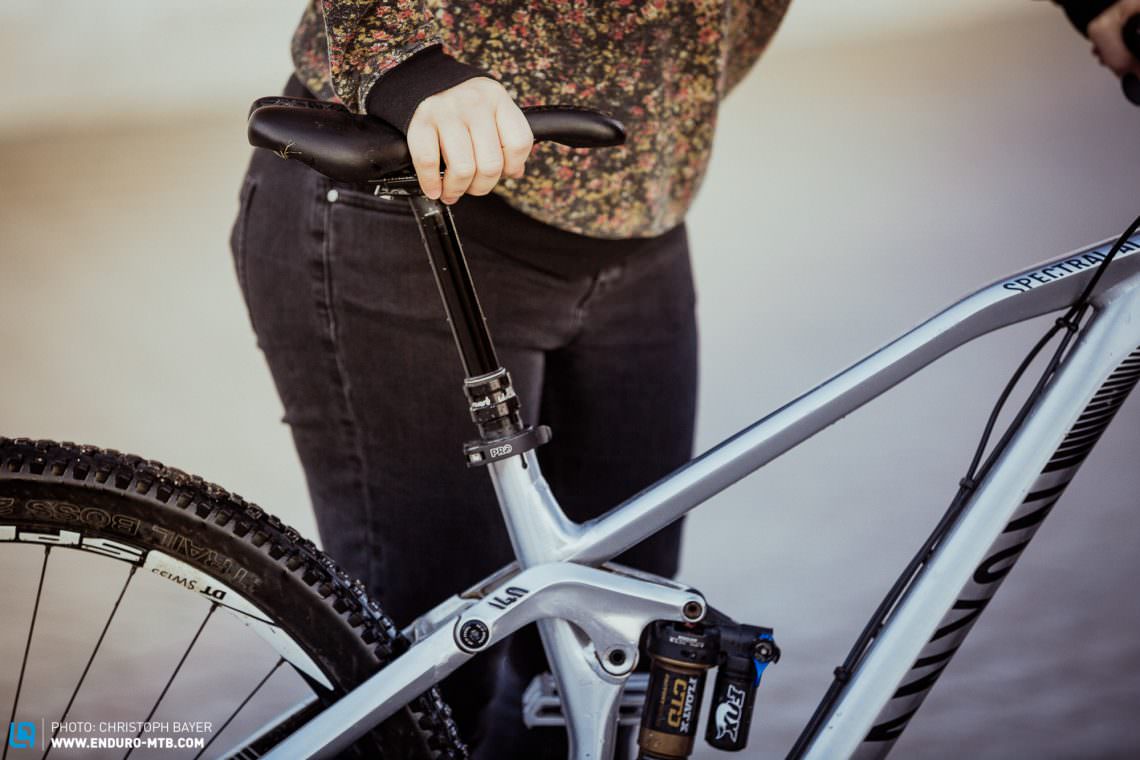
Even a second-hand bike should have a dropper seatpost. However, don’t forget that they’re sensitive bits of kit – just like suspension, they are prone to defects and require servicing. Check that it moves up and down faultlessly, doesn’t drop under load, shows no play in the stanchion, and has a good quality, undamaged cable.
The drivetrain
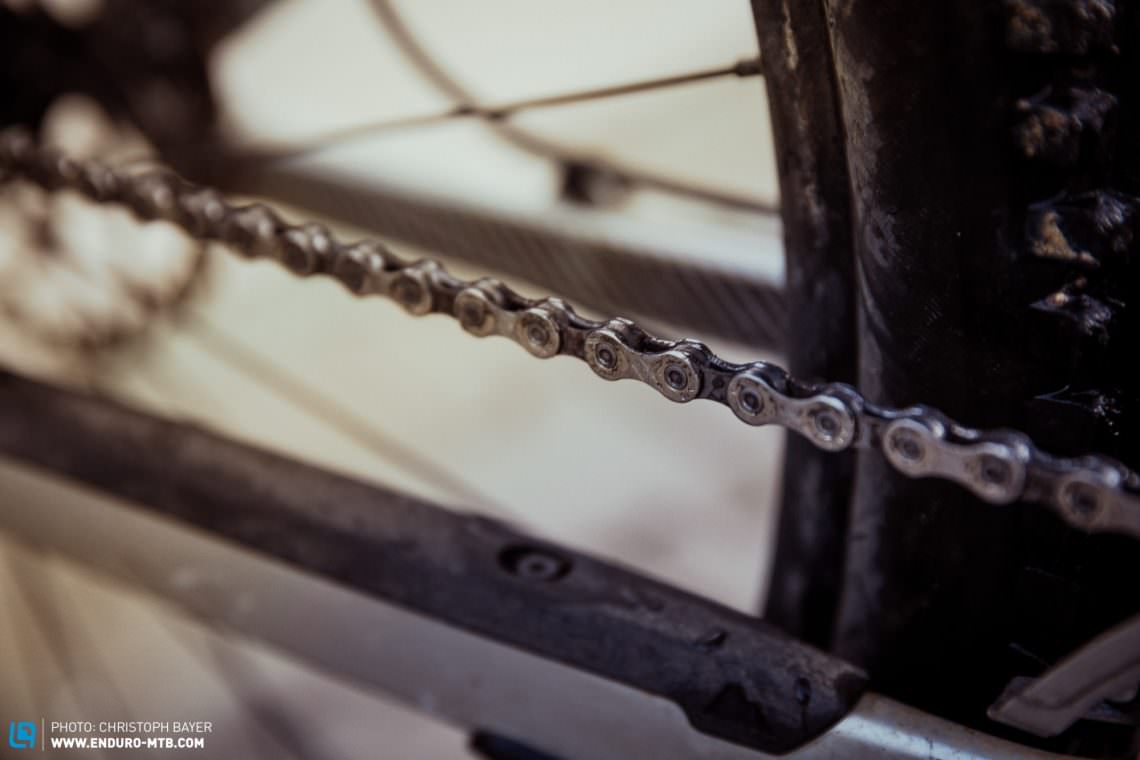
You won’t be going anywhere with a knackered drivetrain! Rely on a chain wear guide, which will tell you the actual condition of the chain (as often real wear is invisible to the eye). This little tool is a like a health check of how much action the bike has seen. If the chain is really worn, you can safely predict that the chainrings and cassette will be on the way out too. Take a close look at the rear mech, rear mech hanger, and the shifters, which could all have suffered in crashes. Shift through all the gears on the test ride and listen out for noise in the bottom bracket region. If there’s noise, then either the bottom bracket isn’t set up correctly or the bearings are done. Best-case scenario: it might ‘just’ be loose chainring bolts.
The brakes
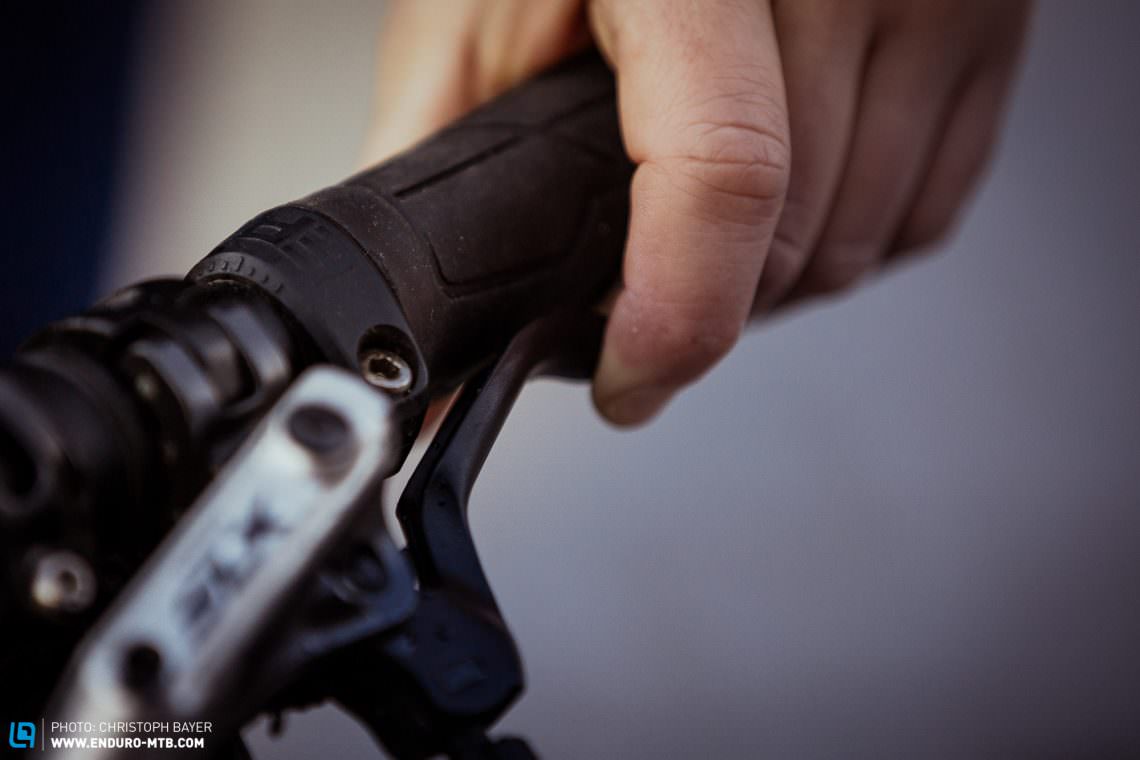
Those who brake, lose. But those who can’t brake definitely won’t be winning! On any bike, the biggest victim to wear and tear is the brakes. Brake pads and rotors are subject to intense pressures on any ride, and even more so in filthy conditions. A quick look at the calipers will show how much life is left in the pads. The rotors will show their age through discoloration and marks. When test riding, pull on the brakes to see if they’ve still got the hunger to bite.
The wheels
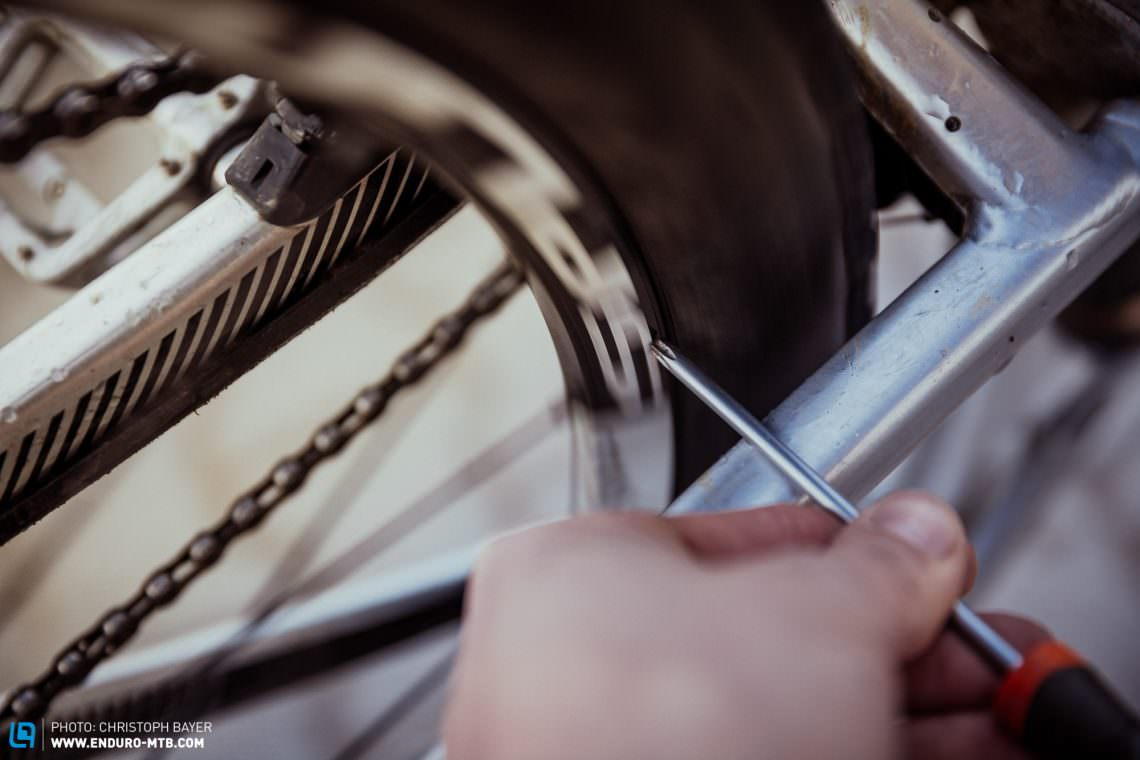
Size matters? Whatever size hoops you’re riding, there’s still the risk of rim dents, play in the hub bearings, loss of spoke tension, cracks in the hub flanges, and issues with the nipples or spokes. Fortunately, these are the sorts of issues that can be spotted before you dip into your pocket. Check the wheel is running true by putting a cable tie around the chainstay and observing if the contact to the rim is regular while the wheel is spinning. Sometimes it’s the tires that aren’t on straight, and the wheel might still be in good condition.
The cockpit and the contact points

In the event of a crash, the cockpit and other contact points on the bike are going to bear the brunt of the impact. When giving a second-hand whip the once-over, check that the bars, stem, grips, and saddle are visually and technically on point. Even though you’ll ultimately end up changing these to suit your preferences, it’s still good to know they’re in good knick.
The tires
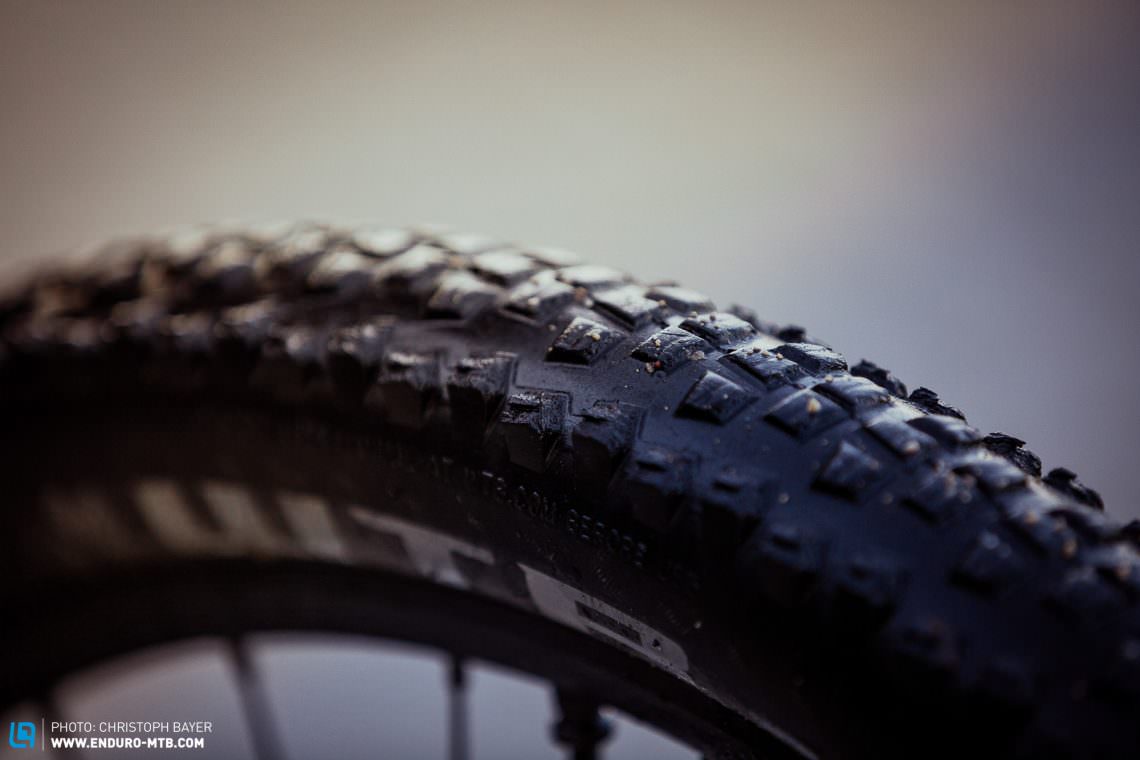
The satisfaction from riding is pretty dependent on having the right tires for your style and preferred terrain. Often the seller will just chuck on any old tires in order to make a sale, and these are probably never likely to be used anyway. In such a case, tired rubber isn’t a deal-breaker, but you can use it as a negotiating tool.
The random facts
It’s worth asking the seller a few questions: what sort of action has the bike seen and where? How often was it ridden in bike parks? Did it compete in many races? Are you the first owner? What upgrades have you made to it? Don’t always expect to hear the truth. When you arrive to check out the bike, the seller should have at least cleaned it. If, however, the bike is really dirty, this isn’t just a motive to negotiate hard on the price – it should also prompt the concern that the dirt is potentially hiding some damage. Take a closer look.
The extra budget
Whatever your budget is, make sure you’ve got at least € 300 extra to play with. After you’ve bought a bike, it’s likely you’ll want to get new tires and set up the cockpit. If budget permits, it’s a wise investment to get the bike checked over by a local bike shop.
+1 (A final tip)
Worn parts are part of daily life, and all of the points we’ve mentioned above can be fixed. If any of the points set off a red flag, use them to negotiate. We’d always recommend taking a buddy to see a second-hand bike, as he or she might spot something that you overlook.
Then all that remains is to have fun with your new old bike!
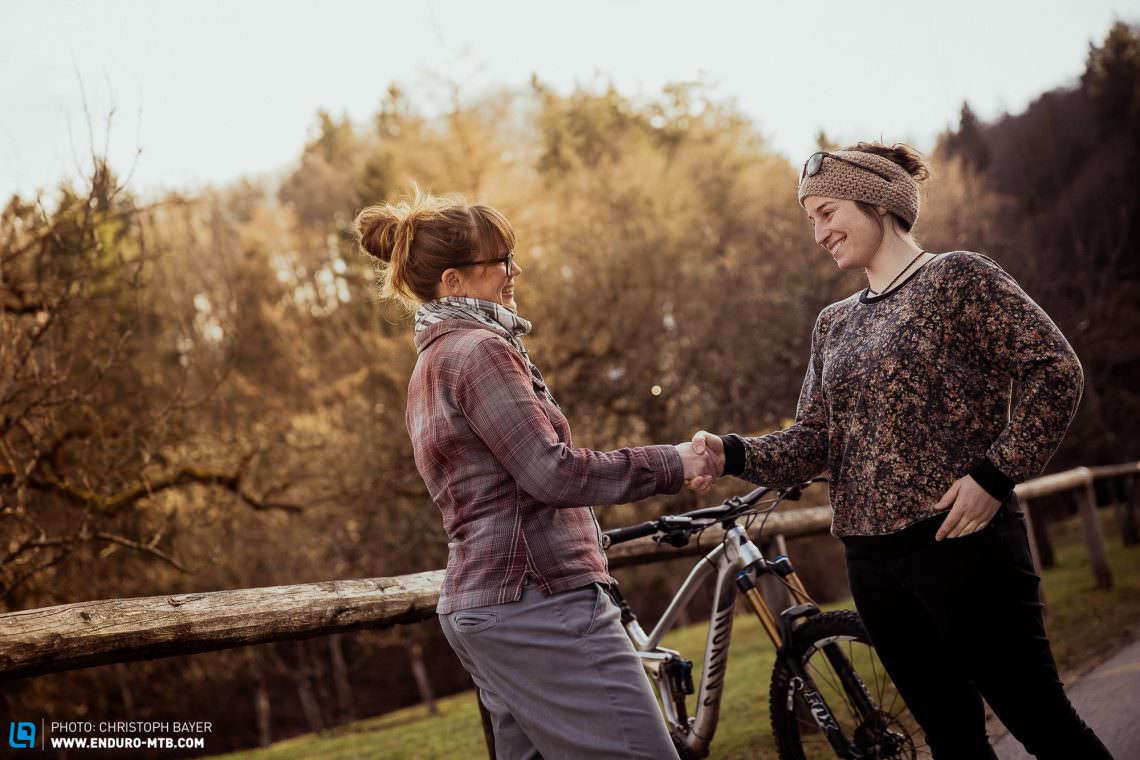
Did you enjoy this article? If so, we would be stoked if you decide to support us with a monthly contribution. By becoming a supporter of ENDURO, you will help secure a sustainable future for high-quality mountain bike journalism. Click here to learn more.
Words: Felix Diehl Photos: Christoph Bayer









